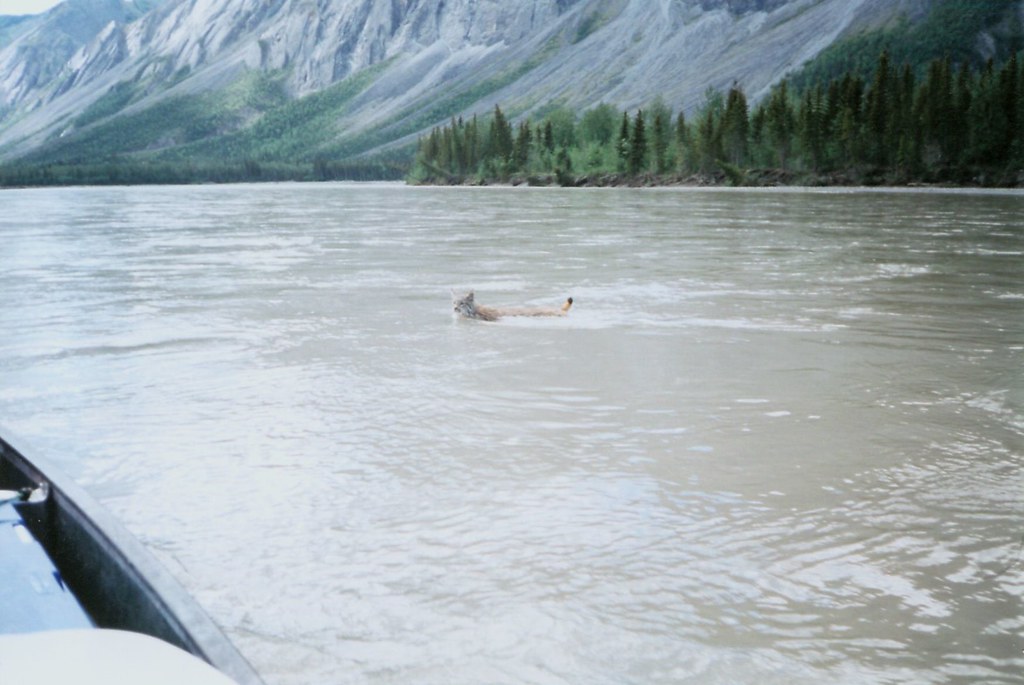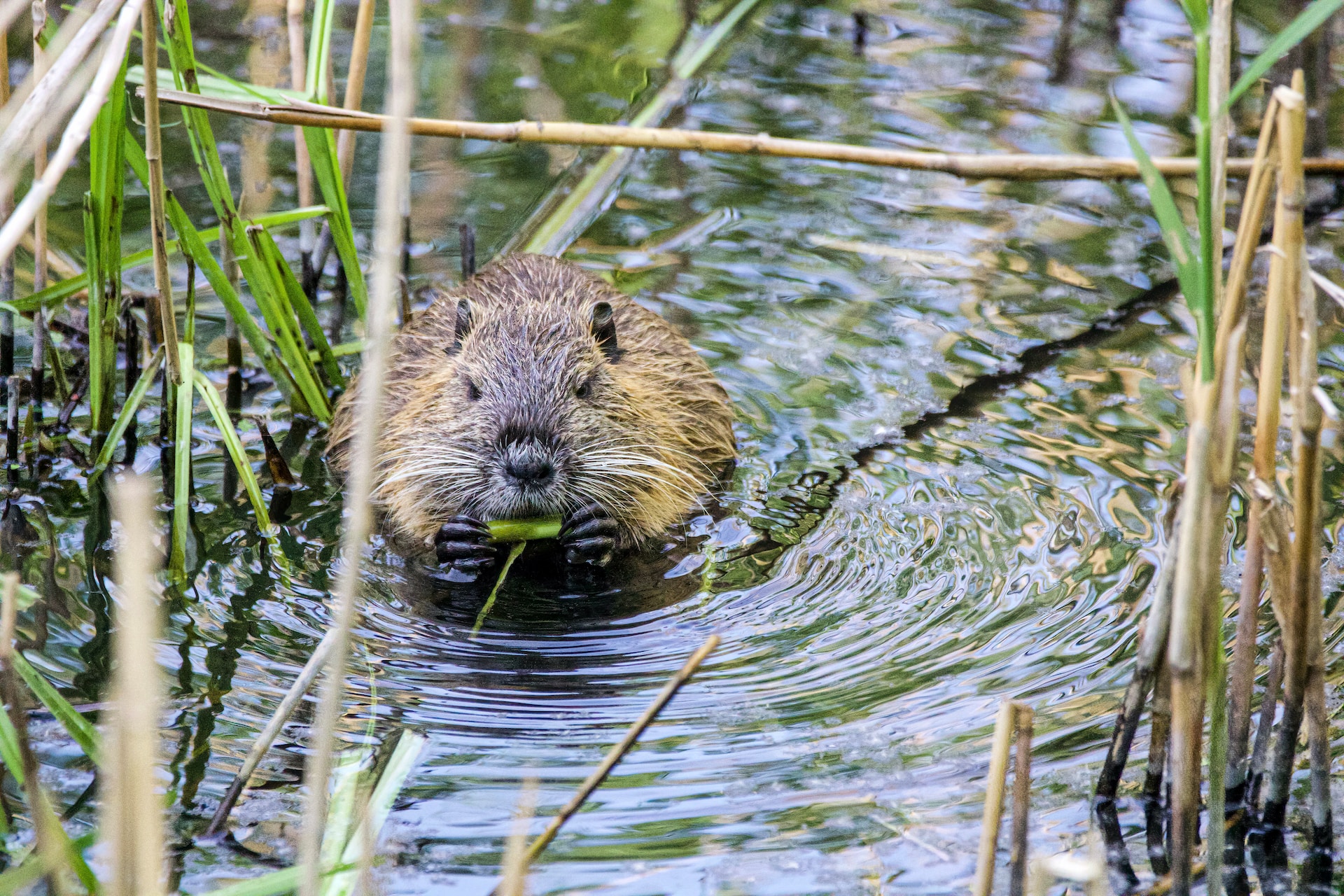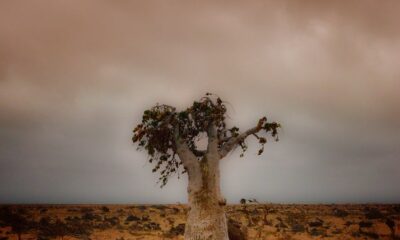Nature and Wildlife
Tips for Spotting the Elusive Mountain Lynx in the Wild

The mountain lynx, also known as the bobcat, is one of nature’s most fascinating creatures. With its elusive nature and stealthy movements, spotting a mountain lynx in the wild can be a thrilling experience for any outdoor enthusiast. Today, I’ll be sharing some tips and insights on how you can increase your chances of spotting these magnificent felines during your wilderness expeditions.
1. Understand their habitat:
Mountain lynxes are primarily found in dense forests, rocky terrains, and mountainous regions across North America. They have a wide territorial range, so the key is to explore areas where prey is abundant, such as rabbits, hares, and rodents. Focus your efforts on regions with an ample food supply, preferably near their favorite watering holes or hunting grounds.
2. Look for signs of lynx presence:
While spotting a mountain lynx is a rare occurrence, you can increase your chances by keeping an eye out for signs of their activity. Look for tracks, claw marks on trees, or scat along trails. Lynx tracks have four toe prints with no claw marks, unlike domestic cat tracks. Fresh tracks imply recent activity, increasing the likelihood of a nearby sighting.
3. Utilize trail cameras:
Setting up trail cameras in areas with known lynx activity can provide valuable insights into their behavior and increase your chances of spotting them. Opt for cameras with motion sensors and infrared capabilities to capture activity during both day and night. Position them strategically along game trails or around potential hunting areas, and be patient—their elusive nature means it might take some time to capture the perfect shot.
4. Practice stealth and patience:
When embarking on your mountain lynx spotting adventure, it’s crucial to be patient and embrace the art of stillness. These creatures are incredibly adept at staying hidden, so take your time and move quietly through their territory. Channel your inner lynx and practice stealth techniques by avoiding sudden movements or loud noises that could startle them.
5. Timing matters:
The mountain lynx is most active during twilight and the early hours of the morning, so plan your outings accordingly. Dawn and dusk offer the best opportunities for spotting these elusive felines when they venture out to hunt or mark their territories. Keep your senses heightened during these hours, as their unique calls can often go unnoticed amid the sounds of nature.
6. Enhance your senses:
Spotting a mountain lynx requires keen observation and a heightened awareness of your surroundings. Train your eyes to scrutinize every detail in the wilderness, as their camouflaging fur can easily blend with the environment. Listen for their soft, raspy calls or the sounds of small prey animals scurrying away—a telltale sign that a lynx may be close by.
7. Seek expert guidance:
Sometimes, even the most seasoned explorers may need a helping hand. If spotting a mountain lynx remains an elusive quest, consider reaching out to local wildlife experts or joining guided tours specifically designed for lynx observation. These professionals possess invaluable knowledge about the area and can provide insider tips to maximize your chances of success.
Remember, spotting a mountain lynx in the wild is a privilege. Respect their environment, observe from a distance, and leave no trace behind. The true beauty of these creatures lies not just in their physical presence but also in the harmony they bring to the delicate ecosystems they inhabit.
Use these tips, be patient, and keep your adventurous spirit alive. The mountain lynx may be elusive, but with determination and persistence, you may find yourself captivated by an encounter with this charismatic predator. Happy spotting!

Nature and Wildlife
Extreme Living: Wildlife Survival in the Himalayas

The Himalayas, spanning across five countries, are home to a diverse range of wildlife that have adapted to the region’s high altitude, harsh climate, and rugged terrain. In this article, we will explore some of the remarkable species that thrive in the Himalayas and the adaptations that have allowed them to survive and flourish in this extreme habitat.
The snow leopard, one of the most iconic species found in the Himalayas, is perfectly adapted to life at high altitudes. Its thick fur provides insulation against the cold, and its large paws act as natural snowshoes. Snow leopards are expert climbers, with powerful limbs and a long, flexible tail that aids in balance. Their exceptional camouflage allows them to blend seamlessly into their rocky surroundings, making them incredibly difficult to spot. Snow leopards are primarily found at altitudes of 9,800 to 17,000 feet and are known to inhabit areas with steep cliffs and rocky outcrops, which provide them with excellent vantage points for hunting their prey.
Another remarkable species found in the Himalayas is the Himalayan tahr, a large ungulate closely related to the wild goat. The tahr is well-suited to life at high elevations, with its sturdy legs and cloven hooves providing excellent grip on the steep, rocky terrain. Their dense, woolly fur provides insulation against the cold, and their impressive agility allows them to navigate the treacherous slopes with ease. Himalayan tahrs are typically found at elevations of 8,200 to 16,400 feet and are known to inhabit steep, rocky cliffs and grassy slopes.
The endangered red panda, a small arboreal mammal found in the temperate forests of the region, is another remarkable species found in the Himalayas. Red pandas are expert climbers, with sharp claws and a long, bushy tail that aids in balance. Their thick fur provides insulation against the cold, and their unique ability to rotate their ankles allows them to descend trees headfirst. Red pandas are primarily found at altitudes of 7,200 to 15,700 feet and are known to inhabit areas with dense bamboo growth, which makes up the majority of their diet.
In addition to these larger species, the Himalayas are home to a diverse array of smaller mammals, birds, and reptiles. The Himalayan marmot, a large ground-dwelling squirrel found at elevations of 11,500 to 18,000 feet, is one such species. These social animals live in colonies and have adapted to the harsh climate by hibernating during the winter months. The Himalayas are also home to over 500 species of birds, including the Himalayan monal, a brightly colored pheasant that is the national bird of Nepal. These birds are found at elevations of 8,200 to 15,100 feet and are known for their impressive courtship displays.
The Himalayas are a treasure trove of biodiversity, with countless species that have evolved unique adaptations to survive in this harsh environment. As climate change and human activity continue to impact these fragile ecosystems, it is crucial that we work to protect and preserve these incredible creatures and their habitats for future generations. By raising awareness of the unique wildlife found in the Himalayas and the challenges they face, we can help to ensure the continued survival of these remarkable species.
Nature and Wildlife
Exploring the Intricate Interdependence Between Species

Out here in the wild, the relationships between different species aren’t just fascinating; they’re essential. It’s a dance of survival, a delicate balance that keeps the natural world humming along. This interconnectedness, this mutual dependence, is what we call symbiosis.
Now, the term symbiosis might sound like some highfalutin scientific jargon, but it’s not as complicated as it seems. Simply put, it’s a close and long-term interaction between two different species. And boy, does it make for some interesting dynamics.
Take the African oxpecker and the Cape buffalo, for instance. The oxpecker, a small bird with an appetite for ticks and other parasites, finds a veritable buffet on the buffalo’s back. In return, the buffalo gets a free grooming service. This mutual benefit is what we call mutualistic symbiosis.
But it’s not always a two-way street of benefits. Sometimes, one species benefits at the expense of another. This is what we call parasitic symbiosis. A good example is the relationship between a tick and a human. The tick feeds on the human’s blood for survival and growth, while the human, well, gets a nasty bite and maybe a disease or two.
Then there’s commensalistic symbiosis, where one species benefits and the other is neither harmed nor benefited. Picture barnacles attaching themselves to a whale’s skin. The barnacles get a free ride and plenty of food as the whale travels, while the whale doesn’t seem to mind their presence.
These symbiotic relationships are more than just interesting trivia; they’re a testament to nature’s ingenuity and resilience. They’re a lesson in adaptation and survival, a lesson that we humans can learn a lot from.
Let’s look closer at the honeybee and the flower, a classic example of mutualistic symbiosis. The honeybee collects nectar from the flower, getting the food it needs. In the process, it transfers pollen from one flower to another, aiding in the flower’s reproduction. It’s a win-win situation, but more than that, it’s a testament to how survival often depends on cooperation and mutual benefit.
Now, you might be wondering, what’s all this got to do with survival in the wild? Well, understanding symbiosis can give us a deeper appreciation of nature’s balance and how each creature, no matter how small, has a role to play. It reminds us that we’re part of a larger ecosystem, and our survival depends on its health and stability.
Moreover, it can guide us in our survival strategies. Just like the oxpecker and the buffalo, we can form alliances and partnerships that enhance our survival. For instance, we can learn to identify and use plants that repel harmful insects or attract beneficial ones. We can understand how certain animals can signal the presence of water or warn us of predators.
In essence, the principle of symbiosis is a powerful tool in our survival toolkit. It teaches us to see the interconnectedness of all life, to respect the balance of nature, and to harness these relationships for our survival and well-being.
So, next time you’re out in the wild, take a moment to observe the intricate dance of symbiosis. Watch the birds and the bees, the flowers and the trees, and remember that we’re all in this together. And in this grand dance of survival, every step, every interaction, every relationship matters.
Remember, it’s not just about surviving; it’s about thriving. And understanding symbiosis, understanding our place in the ecosystem, is a big part of that. So, keep exploring, keep learning, and keep surviving. Because out here in the wild, knowledge is more than power; it’s survival.
Nature and Wildlife
The Role of Beavers in Shaping Our Freshwater Ecosystems

As Jack Morgan, I’ve spent countless hours in the great outdoors, observing and interacting with the natural world in ways most people can only dream of. During my explorations, I’ve come across one creature that never fails to impress me with its industrious nature and significant impact on our freshwater ecosystems – the beaver.
Nature’s architects
Beavers, often overlooked, are nature’s architects. With their sharp teeth and strong jaws, they fell trees and build dams, creating ponds and wetlands. This might seem like simple animal behavior, but the role of beavers in shaping our freshwater ecosystems is far more profound than you might think.
First and foremost, beaver dams create a habitat for a plethora of wildlife. The ponds and wetlands that result from their hard work provide a home for fish, birds, insects, and various mammals. By creating these habitats, beavers increase biodiversity, which is crucial for a healthy ecosystem. It’s a ripple effect; the more diverse an ecosystem is, the more resilient it becomes to changes and disturbances.
Water management
Furthermore, these dams play a critical role in water management. They slow down the flow of water, reducing the risk of floods downstream during heavy rains. The water in beaver ponds is stored and then slowly released, which can also help maintain water levels during dry periods. This function is not only beneficial for the wildlife that depends on these water sources but also for us humans who often live downstream.
Beaver dams also act as natural filters. As water passes through the dam, it leaves behind sediment and pollutants. This process improves water quality by trapping harmful substances, which can have a significant impact on the health of downstream ecosystems.
Moreover, the role of beavers extends to combating climate change. Wetlands are known as carbon sinks, meaning they absorb more carbon than they release. By creating and maintaining wetlands, beavers help in sequestering carbon, thus contributing to the mitigation of climate change.
It’s important to note, however, that beavers are not always seen in a positive light. Their tree felling and dam building can sometimes conflict with human activities. For instance, they can flood agricultural lands or roads, and their taste for certain trees can be problematic in managed forests. But these conflicts offer opportunities for us to adapt and innovate, to find ways to coexist with these industrious creatures.
Understanding and appreciating the role of beavers in our freshwater ecosystems is crucial. These animals contribute significantly to the health and resilience of these ecosystems. The ponds and wetlands they create increase biodiversity, manage water flow, improve water quality, and help combat climate change.
So, next time you come across a beaver dam, take a moment to appreciate the profound impact these creatures have on our environment. Remember, survival isn’t just about adapting to nature; it’s about understanding and respecting it. And in the grand scheme of things, we could learn a lot from the humble beaver. Their instinct to shape their environment for the better, to work hard for the benefit of their community, is a lesson we could all do well to remember.
As we journey through the wild terrains of our world, let’s not forget to acknowledge and appreciate the role each creature plays in the intricate web of life. From the industrious beaver to the tiniest insect, each has a part to play, each contributes to the balance of our ecosystems. The survival and resilience of our planet depend on this balance, and it’s our responsibility to protect and preserve it.
-

 Tactical1 year ago
Tactical1 year ago70-Year-Old Fends Off Intruder with Lead-Powered Message
-

 Tactical1 year ago
Tactical1 year agoVape Shop Employee Confronts Armed Crooks, Sends Them Running
-

 Preparedness11 months ago
Preparedness11 months agoEx-Ballerina’s Guilty Verdict Sends Tremors Through Gun-Owner Community
-

 Preparedness10 months ago
Preparedness10 months agoGood Samaritan Saves Trooper in Harrowing Interstate Confrontation
-

 Tactical1 year ago
Tactical1 year agoMidnight SUV Theft Interrupted by Armed Homeowner’s Retaliation
-

 Survival Stories2 years ago
Survival Stories2 years agoEmily’s 30-Day Experience of Being Stranded on a Desert Island
-

 Preparedness10 months ago
Preparedness10 months agoArizona Engineer’s Headless Body Found in Desert: Friend Charged
-

 Preparedness10 months ago
Preparedness10 months agoBoy Saves Dad from Bear Attack with One Perfect Shot